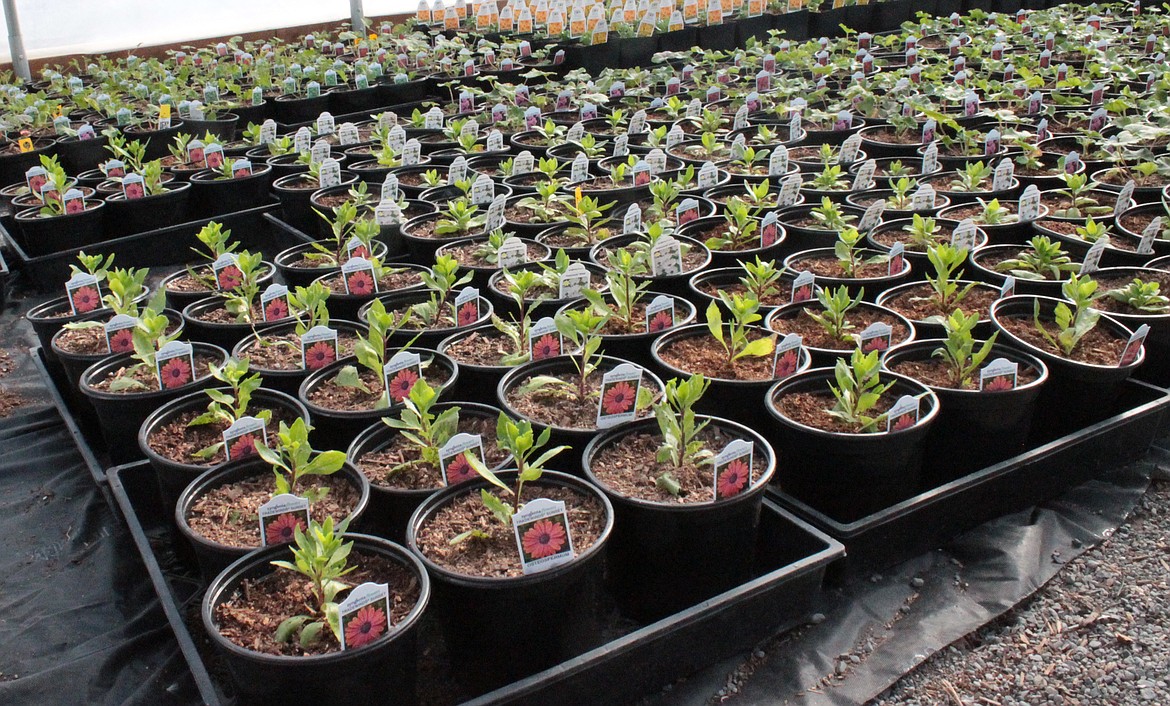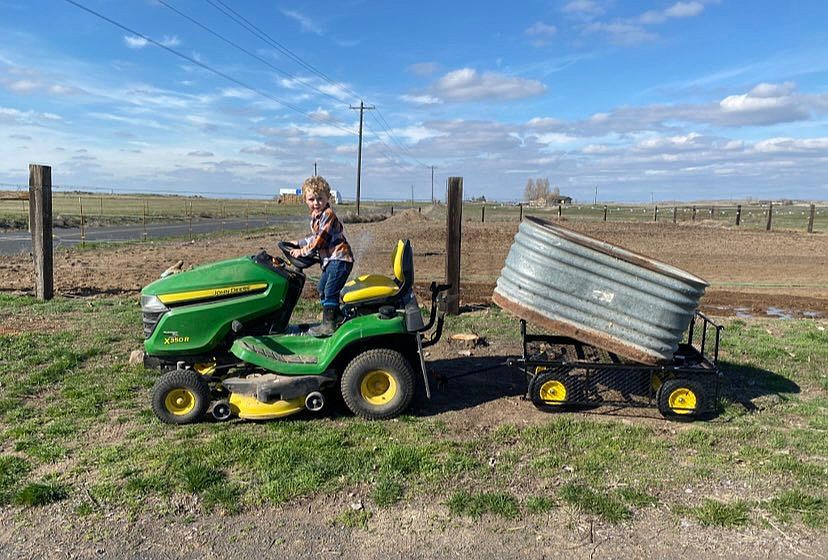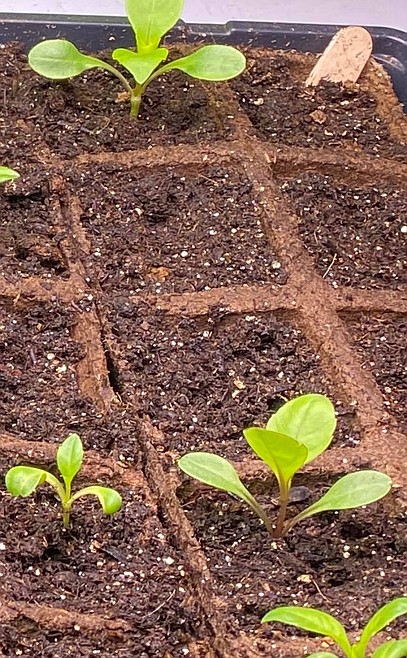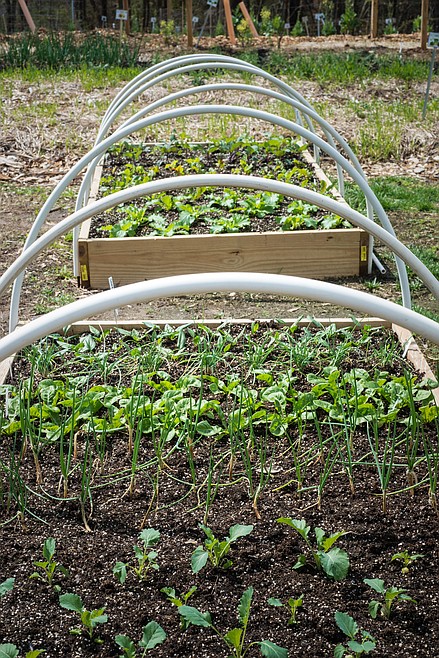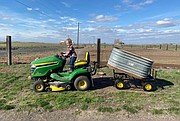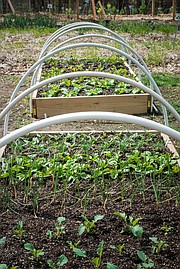Early days
JOEL MARTIN | Hagadone News Network | UPDATED 2 years, 9 months AGO
Joel Martin has been with the Columbia Basin Herald for more than 25 years in a variety of roles and is the most-tenured employee in the building. Martin is a married father of eight and enjoys spending time with his children and his wife, Christina. He is passionate about the paper’s mission of informing the people of the Columbia Basin because he knows it is important to record the history of the communities the publication serves. | March 10, 2023 1:00 AM
MOSES LAKE — Spring is finally here, or so we all hope, although last week’s weather may have shattered many people’s faith in the season. And spring means the garden is calling.
But don’t be too eager to answer that call, experts say.
“Things are still really dormant, you know, and so people need to be a little patient,” said Lisa Villegas, owner of Seed Cupboard Nursery in Royal City.
“One thing that you need to remember is it's still way too early in our area for most types of plants to be out. We're in Zone 6B here in Moses Lake, and our last frost date is approximately May 2. I don't ever put my plants out, my seedlings and annual flowers, until around Mother's Day,” said Valerie Parrott, president of the Moses Lake Garden Club and owner of Seed Cupboard’s satellite nursery in Moses Lake.
This doesn’t mean there aren’t things folks can do to get a jump on planting season.
“Get out and get things cleaned up,” Villegas said. “Now's a good time, if you left stuff for the birds or whatever, to get things clean and get them out of the way, so things can start coming up.”
“(People should) plan out their garden,” said Parrott. “They need to get their garden maps going, where they're going to grow things, so they don't overbuy on their seeds.”
One thing gardeners don’t necessarily think of is sanitizing their tools.
“Your shovels, your rakes, your garden spades, you should sanitize them throughout the season, but especially do it in the spring,” Parrott said. “I just would take a five-gallon bucket, fill it up with water, put a little bleach in there and scrub your tools, make sure you don't have any soil matter compost on there from the previous year.”
This makes it less likely that a disease on one plant will spread to the whole garden, Parrott said, and helps keep PH levels consistent.
There are some things that gardeners should stock up on before the rush hits.
“Now is the perfect time to go buy your fertilizers,” Parrott said. “Because once it comes down to mid-April, May, everyone's going to be trying to get their starter fertilizers and things, and a lot of times the stores are going to be sold out. So now is the optimal time to buy your fertilizer.”
Parrott said it’s also a good idea to pick up seeding supplies early. This can include seed starting trays and other equipment for getting plants started. Those items may sell out quickly, she said, so a head start is a good idea.
For those gardeners who just can’t hold off, Parrott said there are ways to keep plants warm until the frost passes.
“You can put them out if you give them some protection,” she said. “Say, in mid-April you can plant a garden bed, but you're going to need to put like a little hoop house or something over it just in case.”
A hoop house, she explained, is a small makeshift greenhouse about three feet tall made of metal or plastic semi-circles covered in clear plastic.
“Some people will take milk jugs that they fill with water and they'll put those in the hoop house so to just to kind of regulate the temperature a little bit better in the hoop house, keep it a little warmer,” she said. “If you do a hoop house, you need to really make sure that you put some cylinder blocks or something around the pieces of plastic so they don't blow away.”
Finally, if you’ve started your plants indoors, Parrott said, put them out gradually when it’s time to plant outside.
“Don't just take your seedlings directly from your kitchen or your dining room and plant them outside,” she said. “You need to give them about a week of hardening off in the sunshine, meaning take them out for a couple of hours each day and start getting them used to the wind and the sun. Start with like two hours a day, then go to four hours, six hours to get them acclimated. Don’t just throw them out and tell them to hope for the best.”
The Moses Lake Garden Club’s Facebook page can be found at bit.ly/MLGardenClub.
Joel Martin can be reached via email at [email protected].
ARTICLES BY JOEL MARTIN

‘Our favorite time of year’
Shop with a Cop brings smiles to both children and officers
MOSES LAKE — The heavy police presence outside local stores recently wasn’t because of a crime wave. It was police officers engaging in their favorite annual event. “This is one of those times throughout the year that we don't have to go and ask for volunteers to help,” said Moses Lake Police Chief David Sands. “The first day we put it out, I think we got 20-some people say ‘Yeah, we’re in.’ That's just under half the department right away.“

BASIN EVENTS: Dec. 19-27
COLUMBIA BASIN — It’s beginning to look a lot like Christmas, and a lot of people will be spending time at home with their families or at the church of their choice. Still, there are a few things happening around the Basin. Here are some ideas:

Chimney maintenance is essential for safety
MOSES LAKE — With Christmas just around the corner, lots of folks are using their fireplaces for warmth, roasting chestnuts or just a pleasant atmosphere. But before Santa pays your chimney a visit, you should make sure it’s in good working order. Chimney fires are responsible for more than three-fourths of residential building heating fires, according to the U.S. Fire Administration. Regular inspections and cleaning are the best way to prevent that, said Michael Harper, known as The Chimney Guy. “If they’re using (the fireplace) aesthetically – date night, Christmas, New Year’s, show-off times, something in the background here and there, (they should) have it inspected once a year for peace of mind,” Harper said. “If they’re using it two to three days a week religiously through the winter months, they need to have it cleaned once a year.”

